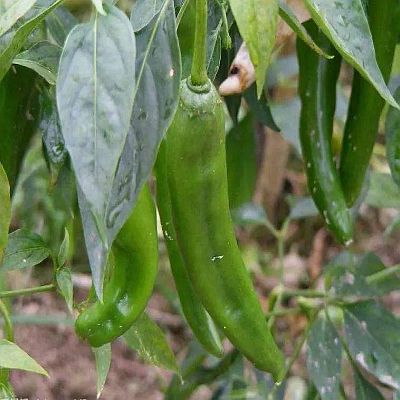Imazethapyr——Strong selectivity, wide herbicidal spectrum and high activity
Imazethapyr is mainly used to control gramineous weeds and broad-leaved weeds in legumes. It has the advantages of strong selectivity, wide herbicidal spectrum and high activity. Such as amaranth, Solanum nigrum, Xanthium sibiricum, Dogtail grass, millet, etc. It is fully absorbed by roots and leaves, conducted in xylem and phloem, and accumulated in plant tissues, which can timely prevent the action of acetylhydroxyl acid synthase, affect the biosynthesis of valine, leucine and isoleucine, destroy their proteins, inhibit plant growth and gradually die. Imazethapyr has better control effect on gramineous weeds and broad-leaved weeds in soybean field and other legume fields, and can effectively control weeds such as bicolor sorghum, xifenggu, Datura stramonium, barnyardgrass, golden dog tail, spinach, chicory pod and amaranth. After the treatment of weed stems and leaves, the weeds will stop growing immediately and wither and die within 2-4 weeks; After soil treatment, the apical meristem of weeds is necrotic and the growth is hindered. Although some weeds can germinate and emerge, they gradually die when they grow to 2.5-5cm. Imazethapyr is a long residual herbicide. It is not suitable to plant sensitive crops in the following years, such as rape, sorghum, potato, etc. Imazethapyr can be used in soybean true leaf period to 2 compound leaf period. For each hectare 1000-2000ml, 15% water agent and water 450-600kg were used for uniform spray. At seedling stage, the pesticide manufacturer suggested that 1500-2250ml should be applied to each hectare, 15% water was used, and then 450-600kg was uniformly sprayed with water.
Application technology of Imazethapyr
It is best to apply the pesticide no later than 2 compound leaves after soybean seedlings when the weeds are about to sprout. The growth of soybean was inhibited at the compound leaf stage, and the normal growth could be restored after 20 days. When the pesticide was applied too late, the soybean grew normally, the pesticide damage was not obvious, but the pod setting was less.
The efficacy of imazethapyr is mainly affected by water. The efficacy of soil treatment after sowing or before sowing is reduced by wind and drought, and the effect on gramineous weeds is greater than that on broad-leaved weeds. Under drought conditions, soil treatment had poor efficacy on Gramineae. In autumn or after sowing, mix soil with rotary hoe before and after seedling application, ridge and sow soybean, and cultivate about 2cm soil after application, which can obtain stable drug effect under drought conditions. Post seedling application is affected by rainfall, moisture and temperature. When soil moisture and air relative humidity are appropriate, it is conducive to the exertion of drug efficacy. When the long-term drought, high temperature and air relative humidity are lower than 65%, the shortcomings of the processing dosage form of the water agent itself will affect the absorption and transmission of weeds to the agent, and increase its drift and volatilization loss. Therefore, the stem and leaf treatment after seedling should be applied when the temperature is low and the humidity is high in the morning and evening, and the effect of application at night is the best.
The degradation of imazethapyr in soil is affected by pH, temperature, water and other conditions. The degradation accelerates with the increase of pH, and the degradation is slow in northern alpine areas.
When imazethapyr is mixed with other herbicides in autumn, soybeans can be sown in the next spring, and other crops cannot be changed. It is suitable for soybean, wheat and corn rotation areas.

